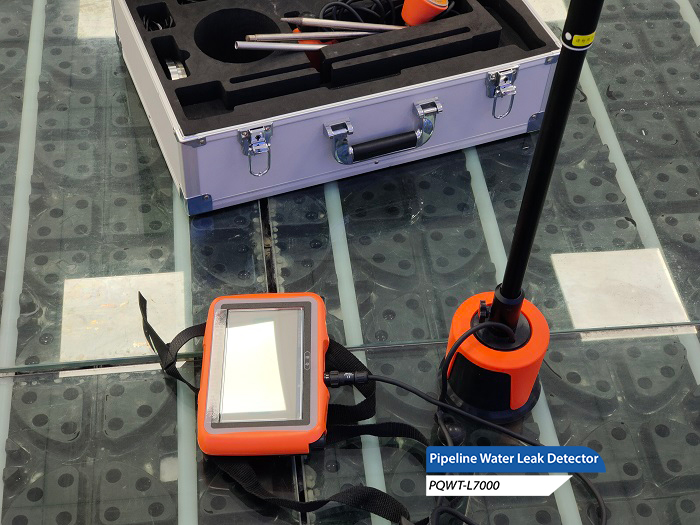Leakage of underground water pipes is a problem that cannot be ignored in the maintenance of urban infrastructure. It not only causes waste of water resources, but also poses a potential threat to the ground structure. Therefore, it is crucial to detect and locate leaks accurately and efficiently. In this article, we will introduce several common pipeline leak detector and its usage.

1. Listening sound leak detector (acoustic detector)
Principle: Listening to the sound leak detector is a simple but effective tool to determine the location of water leaks by capturing the sound generated by the leak. The operator holds one end of the Leak Detector, the other end is in contact with the ground or pipe, and listens for abnormal sounds through headphones.
Advantages: low cost, easy to operate.
2. Ground radar (GPR)
Principle: Ground radar uses the principle of electromagnetic wave reflection, by transmitting high-frequency pulse signals to the ground, and then receiving the reflected signals back, in order to identify changes and abnormalities in the underground structure.
Advantages: It can detect pipelines made of non-metallic materials, has strong penetrating power, and is able to obtain more detailed underground images.
Disadvantages: equipment cost is high, data interpretation requires specialized skills.
3. Water leakage correlation meter
Principle: Water leakage correlation meter is a kind of instrument based on the principle of acoustic wave propagation, it is installed in different positions of the sensor to capture the sound wave generated by the water leakage, and calculate the time difference between the sound wave arriving at the various sensors, so as to determine the location of the leakage point.
Advantages: Applicable to long-distance pipelines, not affected by water quality, accurate positioning.
Disadvantages: for some complex terrain may not be effective, and more complex installation and commissioning.
4. Penetration test
Principle: This method is to inject dye or bubbles into the pipeline and observe whether it seeps out from the ground, so as to determine whether leakage occurs.
Advantages: intuitive, easy to verify the results.
Disadvantages: can only be used in specific situations, such as the acceptance of newly laid pipes.
Conclusion
Choosing the right leak detection instrument and technique depends on the specific application scenario, pipe material, and budget. Often, a combination of methods is used to obtain more accurate results. With the advancement of technology, more advanced detection techniques and equipment will emerge in the future to provide more effective solutions to underground water pipe leakage problems.








